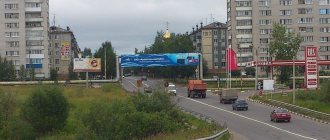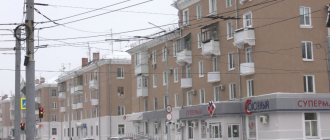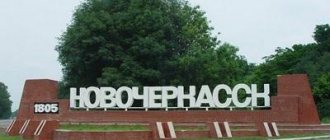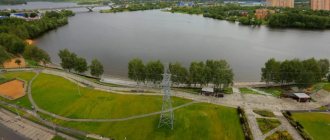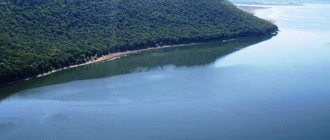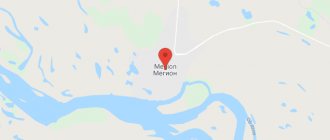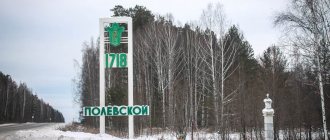Tuymazy is the administrative center of the Tuymazy district. The area is about 43 km2.
There is no reliable information about the name of the city. Several scattered versions, which are based on Bashkir, Finno-Ugric and other language translations. The most interesting and most plausible was put forward by Professor G.V. Vakhrushev that the village was named after the Tuymazy River - “insatiable”.
- 1911 - construction of a mill and attraction of residents of neighboring villages.
- 1912 – construction of the Ufa-Simbirsk road passing through Tuymazy began. In the same year, the development of the nearest oil field begins.
- 1914 - construction of the Volgo-Bugulminskaya railway passing through the village was completed.
- 01/04/1937 – Tuymazy became a workers’ village.
- 1953 – launch of the Tuymazy-Ufa oil pipeline.
- 02/5/1960 – Tuymazy is recognized as a city.
- The city of Tuymazy received greater development in the 1960-70s. The construction of several large factories began here: geophysical equipment, medical glass, chemical and gas processing engineering, porcelain, and gasoline truck plants.
- 1983 – start of operation of the nonwoven materials factory.
Routes on the map of Tuymazy. Transport infrastructure
City transport is represented by buses of various brands and taxi cars.
Intercity communication occurs through bus traffic. There is also a railway station in the city. Intercity trains, such as Ufa-Moscow, Ulyanovsk-Ufa and others, stop here for a short time.
Not far from the city of Tuymazy there is a federal highway M-5 "Ural" . Passes through the villages: Kandra, Kendektamak.
Sights of the city of Tuymazy
The city has a local history museum, 4 libraries, a Tatar drama theater, a park of culture and recreation, a house of culture and an entertainment center.
In 2014, the Tuymazy Arena ice complex opened. Hockey matches, figure skating competitions and other ice entertainment are held here.
- Tuymazinsky Drama Tatar Theater . Productions of both classical Russian literature and performances of national writers (M. Karim, G. Khadzhibekov, etc.) take place here. During the summer, the theater team tours throughout all regions of the Republic of Bashkortostan, and also covers some regions of the Republic of Tatarstan.
- Avenue of Heroes. Monuments to the heroes of the Great Patriotic War who lived in the city of Tuymazy were erected. Two ZIS-2 guns are also installed.
- Palace of Culture "Rodina". The city's main concert venue. Performances by local and visiting artists take place here, City Day, professional holidays of citizens (Petrochemist Day, Mechanical Engineer Day and others) are celebrated.
- Tuymazinsky Museum of History and Local Lore . It contains more than 40 thousand exhibits. Exhibition days, master classes, theatrical ethnographic performances and other social events are held.
Worth visiting monuments:
- "Grieving Mother";
- The first steam locomotive;
- Participants in local wars and liquidators of man-made disasters.
Structure of public administration in Tuymazy
The administration is managed by the head. The name of the department and its structure are developed by each subject in accordance with local traditions and regional characteristics. The authority's responsibilities include:
- management of state property;
- management and control of socio-cultural and economic construction;
- development of management plans for subjects;
- implementation of regulation in the budgetary and economic spheres, including control of trade, public services, pricing, social and cultural spheres, etc.
In their activities, executive authorities in Tuymazy must interact and carry out assigned tasks together with employees of other authorities.
Main streets of Tuymazy
Ostrovsky Street
One of the longest streets in the city. It runs along the Tuymazinka stream. Starts from the street. 70 years of October ends with a departure from the city to the highway.
It houses the district administration, the Tuymazy Arena ice complex, the Rodina Palace of Culture, St. Andrew's Church and other buildings.
Gafurova Street
Starts on the street. Sovetskaya and goes out onto the highway leading out of the city.
There is a local history museum, a branch of Gazprom Gazoraspredeleniye OJSC, a monument to Red Guard soldiers and many retail outlets.
Fabrichnaya Street
Starts from the street. Gorky, ends in front of the bridge over the railway.
The cardboard and paper mill is located here, after which it was named.
Gorkogo Street
One of the industrial streets of the city. It houses the following enterprises: a nonwoven materials factory, OJSC Tuymazinsky Plant of Geophysical Equipment and Equipment, LLC Tuymazinsky Pipe Plant, Tuymazinsky Gas Processing Plant and others.
Lenin Street
Starts from the street. International, ends at st. Northern.
The Tuymazinsky central district hospital and the Al-Fatiha mosque are located here.
Chapaeva Street
Starts from the street. 70 years of October, ends at the exit from the city.
On the street there are: “Tuymazytekhuglerod”, “Bashneft”, Central City Library, LLC Trade and Production Enterprise “Kulinaria”.
Feedback on the work of the Administration
About the city of Tuymazy
1911
On the bank of the river
In Usen, at the foot of Krasnaya Gorka a mill was built, which attracted peasants from the surrounding villages and gave rise to the development of a settlement near the mill. In 1912,
a wooden station building was built (preserved to this day) and 2 barracks for station workers.
Significant changes occurred in subsequent years, when the construction of the Simbirsk-Ufa railway, passing through Tuymazy, began, as well as from the beginning of the development of oil fields belonging to the oil-bearing horizons of the Volga-Ural region. Already by August 15, 1914
, the construction of the Volga-Bugulma railway was completed, and before the outbreak of the First World War, the first trains with cargo and soldiers of the tsarist army passed through.
The first representatives of the working class appeared in the village in the form of railway workers. In 1917
, at the Tuymaza railway station, 10 families lived in barracks - a total of 46 people.
Events of the Civil War 1917 – 1920 We didn't miss the small stop. Heavy fighting took place along the railway and in the vicinity of the present city. In 1922, a monument to three Red Guards shot by Kolchak’s troops was erected near the old station. This monument was moved to the new station, and from there in 1980 to the museum. And in the village of Mullino (now part of the city of Oktyabrsky) a monument to V.I. Chapaev was erected, at the place where his famous division crossed the Ik River.
Initially, the Tuymaza station was part of the Adnagulovskaya volost of the Belebeevsky district. Adnagulovo at that time was a large village with three mosques, a madrasah, and a bazaar was held here every Friday, where people from all nearby villages gathered for shopping. The beginning of the twenties was marked by the most difficult test - post-war devastation, surplus appropriation, drought caused severe famine, people died in entire families. The emerging station village began to gradually grow due to the peasants moving here, who settled mainly in dugouts, and already in 1923
year, the volost center was moved to Tuymazy.
Bakeries, shops, a grain procurement point began to be built, handicraft enterprises arose: in 1925
- the Zarya artel of disabled people, and in 1928 an elevator was built, in
1929
a slaughterhouse. The first streets appeared: Vokzalnaya, Sovetskaya, Krasnoarmeyskaya, Lenina.
During these same years, a clinic and the first pharmacy, a comprehensive railway school, a post office and a telephone were opened. IN 1927
The peasant credit partnership purchased the first Fordson tractor.
In 1928
, a dynamo was installed at the elevator, and the first electric lights were lit on its territory.
On August 20, 1930
, the Tuymazinsky district was created with its center in the village of Tuymaza, numbering at that time more than 1000 households. This year, a regional consumer society and a bee base were created, a post office building was built on Gafurov Street, next to which in 1934 the first brick two-story bank building was built, which now houses the Museum of Local Lore. Opposite the bank and post office, a public garden named after Gafurov was founded, named after the communist buried here, killed in September 1931 by fists in the village of Karmaly-Validovo (now Gafurovo). The garden named after Gafurov has been a favorite vacation spot for Tuymazin residents for many years; old-timers of the city remember with pleasure the dance floor with a brass band, the summer cinema, and the nearby stadium and cultural center.
Why exactly Tuymazy... Such a strange word for those who have come in large numbers. Let's look at the main versions:
- Bai Mazy lived in one of the surrounding villages. He was getting ready to get married and chose a place for the wedding on the banks of the river. Fall asleep. Since then, this area, and subsequently the city, began to be called “Tuymazy”, which translated means the wedding (tui) of Mazy.
- According to surviving legends, the lands where the territory of the Tuymazinsky district is currently located previously belonged to Bai Atnagul. There is a letter from Atnagul to his brother Tuktogul, whose lands were located on the site of the present village of Tuktagulovo. In a letter to his brother, Atnugul asks to save livestock and bees in a dry year. “My lands have not been saturated with moisture this year. There has been no rain since the beginning of summer.” Thus, this legend also reflects the content of the word “Tuymazy”.
- The name Tuymazy means “bee road” (in the Komi language, mazi means bee, tui means road). Many names in the Republic of Bashkortostan, and even in Central Russia, have Finno-Ugric roots. At the same time, beekeeping is the original trade of the Bashkirs.
- Near the modern village of Starye Tuymazy, there are many karst sinkholes, lakes, and caves. It is believed that water used to flow into one of the caves. Hence the area was nicknamed - insatiable (tuymas)
In 1935
, the village of Tuymazy received the status of a workers' village. In 1937, a district hospital with 75 beds was opened, and in 1938 a third school was opened on Sovetskaya Street (now it is the UPC). At the end of the 30s, in Tuymazy there was a brick factory (Usensky), a sawmill, a meat processing plant, a poultry farm, a shoe and sewing workshop, a machine and tractor station and several artels. But the main event was the discovery of Tuymazinskaya oil, which occurred on May 2, 1937. near the village of Naryshevo.
In May 1937
The Tuymazaneft trust was organized in the village, the management of which was located in a wooden barracks in Tuymazy. The first steps in the development of Tuymazinsky oil were difficult: drilling winches, pumps, and steam boilers were carried on log skids. Two or three dozen horses were harnessed to the sleigh. Twenty kilometers from the Tuymazy station to the village of Naryshevo were covered in two days. The drilling rigs were rotated by steam engines and illuminated by kerosene lanterns. There were strong rocks almost from the surface - the chisels had difficulty getting through them. Every now and then pipes burst, and broken drills remained in the well. It took weeks to get them out. The drillers also lay in wait for fractured formations with voids, in which the clay solution disappeared without a trace. It took months to fill the underground hole with brushwood, clay, and cement.
IN 1939
year, secondary school No. 3 was opened on the street. Soviet. It graduated from Afanasy Kochetkov, a film actor, his brother Viktor Kochetkov, a writer, Evgeny Vasilyevich Stolyarov, General Director of the Bashneft Association, Albina Imaeva, a composer, Farit Seiful-Mulyukov, a political TV commentator, and others.
What the regional center of Tuymazy was like was described by the famous poet B. Bikbay in the newspaper “Lenin's Path” on December 3, 1931: “Tuymazy... Tuymazy... What is Tuymazy? This is just one of the regional centers. There are dirty streets and small houses the size of a fist, where 3-4 families live. Apart from the district executive committee, there are no two-story houses here; there is no electric light not only on the streets, but even in the houses. The institutions are located very closely. Only the noise of trains passing several times a day gives the regional center some originality, some difference from other regional centers.”
Tuymazy during the Great Patriotic War.
The peaceful work of the Soviet people was interrupted by the war of 1941-1945.
The residents of Tuymazin sent 29,637 of their best sons and daughters into the ranks of the Red Army. They fought heroically on the fronts of the Great Patriotic War. About 14 thousand of them were awarded orders and medals for their feats of arms, and four were awarded the title of Hero of the Soviet Union. These are Alexey Lysenkov from the village of Konstantinovka (died in Hungary on March 19, 1945), Fayzulla Gabdrashitov from Starye Kandry, Afanasy Karmanov from Ardatovka (died on June 23, 1941), Ivan Elkin from Pokrovka. The village of Tuymazy and the region turned into an important link in the Soviet rear. The men who went to the front were replaced by women and teenagers. Living conditions were very difficult. Most of the cars and tractors were sent to the army. We had to plow and sow not only with horses and cows, but also harness ourselves to the plows. Despite enormous difficulties, the residents of Tuymazin also collected funds for the construction of squadrons of combat aircraft, sent gifts and parcels with warm clothes to the front. Collective farmers donated grain from their reserves to the seed fund. The daily life of people was completely subordinated to a single goal: “Everything for the front, everything for victory!” In the district hospital, in the school buildings, there was a hospital for the wounded at the front.
The existing enterprises and handicraft artels in the village and in the region switched to serving the needs of the front. Artel "Bronevik" repaired fur coats and padded jackets, sewed new uniforms. Oil workers, despite the low yield of coal-bearing layers, did everything possible to increase oil production. By this time, 57 wells were operating in the oil fields, producing up to 250 tons of oil per day. For the first time at the beginning of the war, Tuymazinskaya oil went to oil refineries. Despite wartime, oil workers are given significant funds to carry out oil exploration work, which leads to the second discovery of Tuymazinskaya oil. On September 26, 1944, after eight months of drilling, a powerful fountain of Devonian oil with a daily flow rate of 250 tons erupted from well No. 100 near the village of Naryshevo. This immediately doubled oil production in the fields.
Post-war development of the village.
With the discovery of oil in Devonian deposits, the station village with a population of eight thousand began to grow.
The road to the city of Oktyabrsky, which is under construction, is being built. At the beginning of 1946, a motor transport enterprise was organized, in 1947 the construction of the Tubankul brick factory began, and in the same year the electrification of the village began, the Tuymazy-Ufa oil pipeline was built. In 1949, a stadium was built next to the park. (in 1933 they began to lay out a garden park. In 1935, with the help of students from schools No. 1 and 2, its design was completed.
Cheap raw materials - associated gas and the needs of the developing oil industry contributed to the construction of new enterprises. In September 1952 Construction began on a medical glass factory and two-story houses for factory workers, where the first bath furnace was lit on December 31, 1958. In November 1953 The gas processing plant started operating. At this time, the population of the village was 14.5 thousand people.
Construction of the Cosmos cultural center began in 1955, and construction was completed in 1964. Now there is a Tatar drama theater here. There was a parachute tower near "Cosmos". In 1965, it was transported to the mountain near Agirtamak and equipped as a television tower. IN 1957
In 2007, the first machine-building enterprise was opened - a plant for the repair of tractors and automotive equipment, which was later repurposed into a plant of geophysical equipment and equipment (TZGO and A) for the production of geophysical equipment on all-terrain vehicles and the chassis of off-road vehicles. This technique is intended for exploring oil and gas wells.
At the end of 1957, the construction of a soot plant (carbon black) was completed. In 1959, a garment factory began operating. The social sphere is also developing. At the end of the fifties, the House of Pioneers (now a halochamber), the Sputnik cinema were built, and the number of schools reached ten. The village was built up with two-story houses, and its population was already 23,400 people.
Tuymazy is a city.
In 1960
, on February 5, the working village of Tuymazy received city status. By the new year of 1960, a railway station was built, which became a decoration of the city. Housing construction at this time was carried out mainly in the residential settlement, where the first three-story house was built in 1960, four-story houses in 1962, and in 1963 the first five-story buildings appeared. Nurimanov Street (now Lenin Avenue) began to be built up from the residential settlement to the station. The bus station has been operating since 1963.
In 1965, October Square was paved, on which the building of the city party committee was located (now the city administration building), five-story buildings were built, which now house the Matrix and Pyaterochka stores, and in 1967. - “Anniversary”. In 1970, the Bashkortostan Hotel with 164 beds was built. 80% single rooms, a functioning restaurant (now there is none, there is a cafe within the hotel) completed the formation of a new city center. On November 6, 1967, a monument to V.I. Lenin was unveiled (previously stood on the square, after the collapse of the USSR it was demolished)
New schools were built during these years 1963
g. – a new building was built for secondary school No. 1, 1966 – school No. 10 (now No. 9), 1967 – school No. 7, 1969 – secondary school No. 2. Nurseries and kindergartens are opening in new neighborhoods. In 1962, a medical school and a branch of the industrial technical school were opened.
New large industrial enterprises were also built: a paper mill (December 7, 1966), a garment factory No. 3 (April 1968), and a chemical engineering plant (January 1, 1969). The sixties of the 20th century can be called a time of accelerated and systematic formation of the city. At this time, the dynamically developing Tuymazy became one of the symbols of the country: all the central newspapers wrote about the successes of Tuymazy oil workers, builders, and glaziers, and the city was visited by the then leader of the USSR N. S. Khrushchev. IN 1971
year the music school moves to a new building. Until this time, she was located on the street. Chekhov in the barracks since 1962. In 1973, the District House of Culture moved to a new building with 600 seats on the street. Ostrovsky and received the name “Motherland”. At the intersection of Ostrovsky and 70 Let Oktyabrya streets, the Duslyk department store has been operating since 1972 and an indoor market since 1986.
The development of the city continued in subsequent decades. In 1976, they began to build the Autoconcrete Truck Plant (ABV). In December 1978, the first stage was put into operation. This is the largest enterprise for the production of concrete transport equipment in Russia. In 1978, a maternity hospital with 85 beds was opened. Previously (since 1939) there was a maternity hut.
IN 1976
In 1978, the first nine-story building was built on Vokzalnaya Street; in 1977, secondary school No. 4 was built, and the “Grieving Mother” monument was opened; in 1978, the first products of the porcelain factory were received and a new maternity hospital was opened on Michurina Street. The city's population in 1979 was 43,700 people.
IN 1980
The Olympian sports complex was opened, the first stage of the concrete truck plant was put into operation. May 22, 1980 st. Nurimanov was renamed Lenin Avenue. The Olympiets sports complex with a swimming pool has been open since April 1980. In 1982, a new building for secondary school No. 8 was built. Near the collective gardens in the south of the city, on the territory of the former village of the Armed Forces of Ukraine, a FNM (nonwoven materials factory) was built. Entered into force in December 1983.
IN 1986
year, an indoor market was built on the street.
Ostrovsky, and in 1989 the House of Children and Youth Creativity. In 1991, a sanitary-faience products factory was founded, the Tatar Drama Theater and a branch of the legal technical school were opened. The city's population increases to 64 thousand people. since 1992
. Imam-khatib Gali Valiullin (graduate of school No. 2). The prayer house at the stadium has been operating since April 1993. At the end of 1993, construction of a new building for the administration of the Tuymazinsky district was completed. The editorial office of the regional newspaper “Tuymazinsky Vestnik” was also located here.
Initially, the railway crossing was at TZGOiA; it was closed in May 1974. Motor vehicle traffic was carried out behind the paper mill. In 1994, an overpass (bridge) was opened.
In 1999, on June 28, by Decree of the Presidium of the Republic of Belarus, the city of Tuymazy and the Tuymazinsky district were united. The administration of the city and district was formed.
A significant contribution to the economy is made by farmers who have proven themselves masters of high yields not only in the republic, but also far beyond its borders. Greenhouse farms, which are the hallmark of the Tuymazinsky district, occupy one of the largest areas in Russia - 280 hectares (2015). Greenhouse vegetables grown on Tuymazinsky soil have gained all-Russian fame, and the expression “Tuymazinsky tomato” has become synonymous with high quality. Today, local farmers are actively developing other types of activities. These are animal husbandry, crop production, production of kumis from goat and mare's milk, breeding of young poultry, fish farming, mushroom growing, and floriculture.
In 2007, several important and large facilities will be commissioned, including a reservoir on the Nugush River and a school in the Vostochny microdistrict.
Today the city of Tuymazy is a large industrial center in the west of the Republic of Bashkortostan. A small station village has turned into a city with a highly developed diversified industry, largely thanks to the rich oil fields discovered in our area in the 30s and 40s. Suffice it to say that in just half a century of their development, the Tuymazinsky land gave the country 441 million tons of oil.

